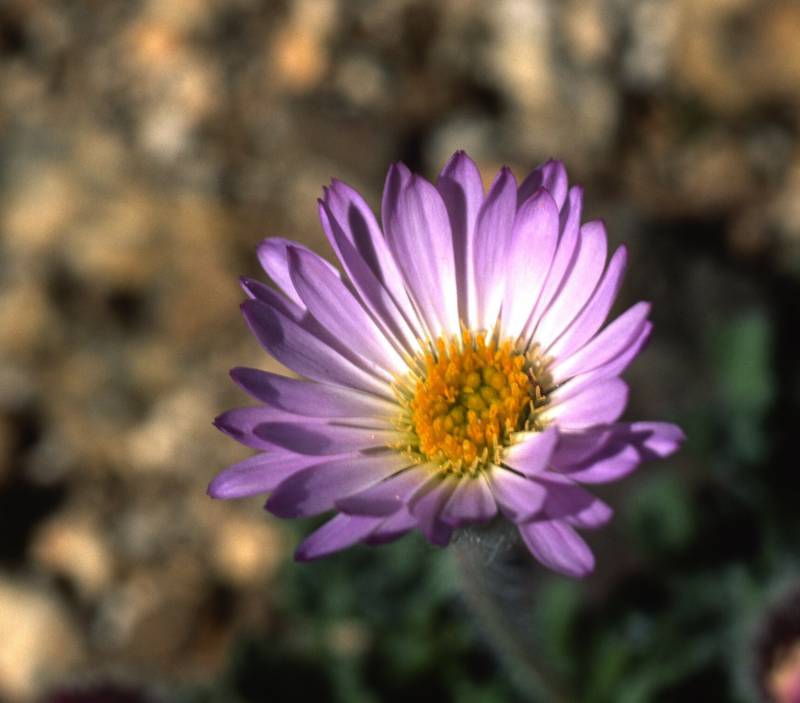|
Salish fleabane, star peak fleabane
|
foothill fleabane, longleaf fleabane
|
| Perennial from a taproot and branched crown, forming dense cushions, the simple, erect, scape-like stems 1.5-7 cm. high, pubescent. |
Perennial with a tap-root, 1-5 dm. tall, sub-erect, generally purplish at the base, the herbage covered densely with short, spreading hairs. |
Leaves all basal on slender petioles; leaf blades obovate-spatulate, 3-16 mm. long and 3-6 mm. wide, the bases abruptly expanded, the margins usually with 3 rounded lobes and marginal hairs, the faces with stiff hairs. |
Basal leaves triple-nerved, elongate, acute, tapering gradually below, up to 25 cm. long including the petiole, and 1 cm. wide; cauline leaves reduced. |
Heads solitary, the involucres 8-11 mm long, the bracts in 2-3 series, usually purplish, especially the tips; ray flowers 15-32, white to bluish, 6-10 mm. long, spreading; disk flowers yellow; pappus of capillary bristles |
Heads 1-16 in an open inflorescence; involucres 5-7 mm. high, grey-hairy, its bracts somewhat imbricate; rays 35-65, pistillate, deep blue or occasionally pink, 7-13 mm. long; pappus double, the inner of 20-30 bristles. |
Achenes 2-2.6 mm. long, 2-nerved. |
|
|
|
|
|
| July-September |
June-August |
| Cliffs, ridges, ledges and gravelly slopes at mid- to high elevations in the mountains. |
Open, usually dry places, often among sagebrush. |
Ocurring east of the Cascades crest in the North and Central Cascade Mountains in Washington; southwestern British Columbia to central Washington.
|
Occurring east of the Cascades crest in Washington; southern British Columbia to eastern Oregon, east to Montana, Wyoming, and Utah.
|
| Native |
Native |
| Sensitive in Washington (WANHP) |
Not of concern |
E. acris, E. aliceae, E. annuus, E. aureus, E. basalticus, E. bloomeri, E. caespitosus, E. chrysopsidis, E. compositus, E. corymbosus, E. davisii, E. disparipilus, E. divergens, E. eatonii, E. elatus, E. filifolius, E. flettii, E. glacialis, E. howellii, E. inornatus, E. karvinskianus, E. leibergii, E. linearis, E. lonchophyllus, E. nivalis, E. oreganus, E. peregrinus, E. philadelphicus, E. piperianus, E. poliospermus, E. pumilus, E. speciosus, E. strigosus, E. subtrinervis |
E. acris, E. aliceae, E. annuus, E. aureus, E. basalticus, E. bloomeri, E. caespitosus, E. chrysopsidis, E. compositus, E. davisii, E. disparipilus, E. divergens, E. eatonii, E. elatus, E. filifolius, E. flettii, E. glacialis, E. howellii, E. inornatus, E. karvinskianus, E. leibergii, E. linearis, E. lonchophyllus, E. nivalis, E. oreganus, E. peregrinus, E. philadelphicus, E. piperianus, E. poliospermus, E. pumilus, E. salishii, E. speciosus, E. strigosus, E. subtrinervis |
| |



